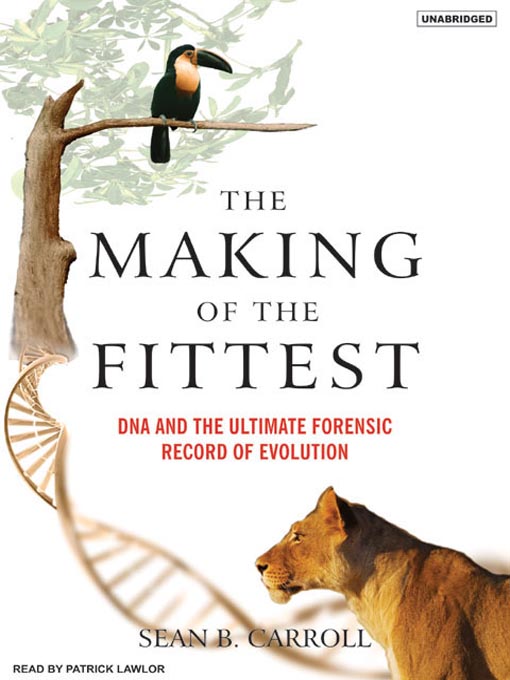
The Making of the Fittest
DNA and the Ultimate Forensic Record of Evolution
فرمت کتاب
audiobook
تاریخ انتشار
2007
نویسنده
Patrick Lawlorناشر
Tantor Media, Inc.شابک
9781400173150
کتاب های مرتبط
- اطلاعات
- نقد و بررسی
- دیدگاه کاربران
نقد و بررسی

In a modern coda to Darwin's laws, Sean Carroll examines the evolutionary concept of the "fittest." Although not intended for casual readers, the audiobook discusses in satisfying scientific detail the current knowledge of evolution on a molecular basis and labels it "genomics." Narrator Patrick Lawlor picks just the right pace for such a weighty tome, leaving enough time for listeners to absorb great detail but not be narcotized. He never misses with the complex vocabulary and finds an agreeable tone to keep listener interest high. Those who know Lawlor's other readings will again be amazed at his proficiency with the requirements of so many kinds of literature. An open mind will find the audiobook challenging and rewarding. J.A.H. (c) AudioFile 2007, Portland, Maine

August 7, 2006
Picking up where scientists like Richard Dawkins have left off, Carroll, a professor of genetics at the University of Wisconsin–Madison (Endless Forms Most Beautiful: The New Science of Evo-Devo
), has written a fast-paced look at how DNA demonstrates the evolutionary process. Natural selection eliminates harmful changes and embraces beneficial ones, and each change leaves its signature on a species' DNA codes. For example, the Antarctic ice fish today has no red blood cells; yet a fossilized gene for hemoglobin remains in its DNA, showing that the fish has adapted over 55 million years by losing the red blood cells that thicken blood and make it harder to pump in extreme cold. The fish has developed other features that allow it to absorb and circulate blood without hemoglobin. . Carroll points out that by examining the DNA of these ice fish species, it's possible to map its origins as well as the history of the South Atlantic's geology. He also uses dolphins, colobus monkeys and microbes to demonstrate how deeply evolution is etched in DNA. While searches for the genetic basis for evolution are hardly new, Carroll offers some provocative and convincing evidence. 7 pages of color illus.; 50 b&w illus.

























دیدگاه کاربران